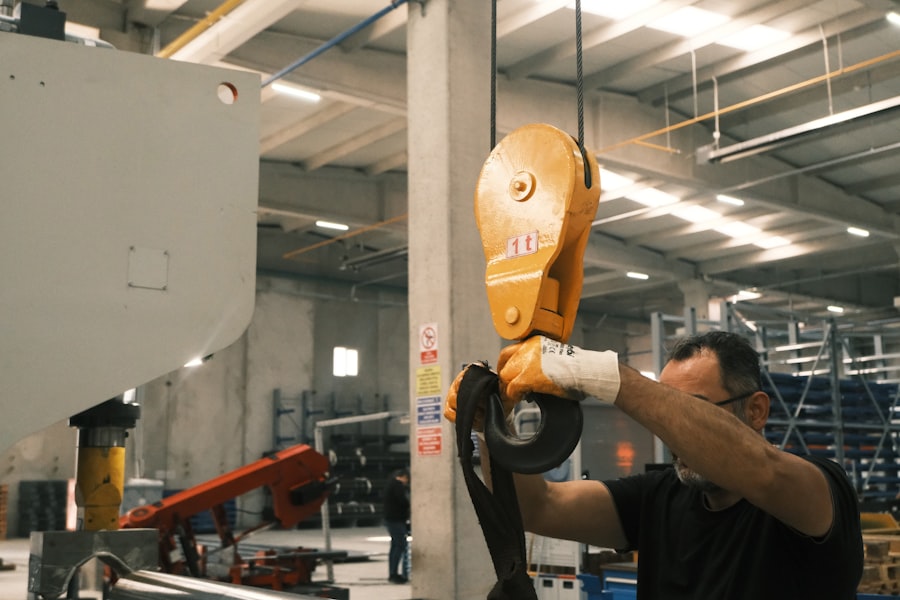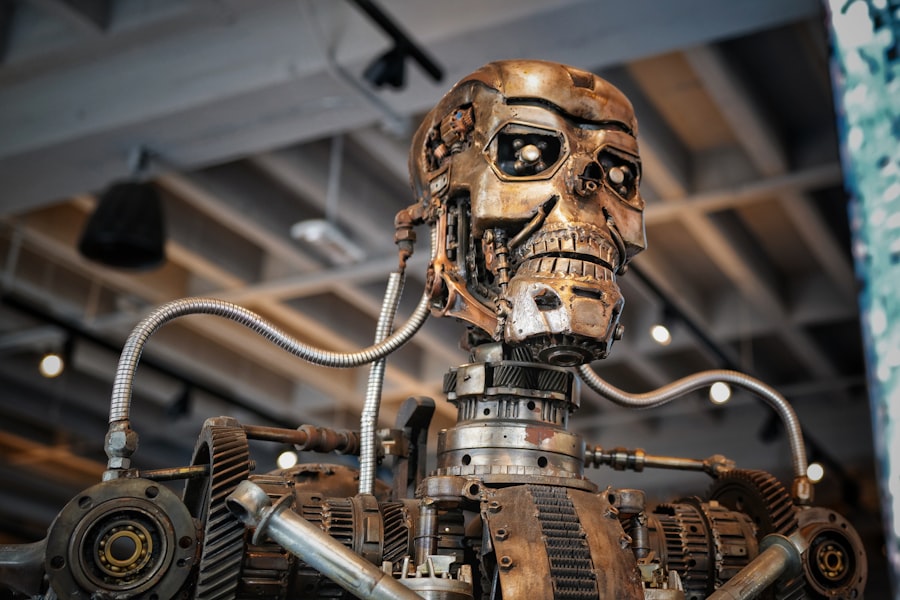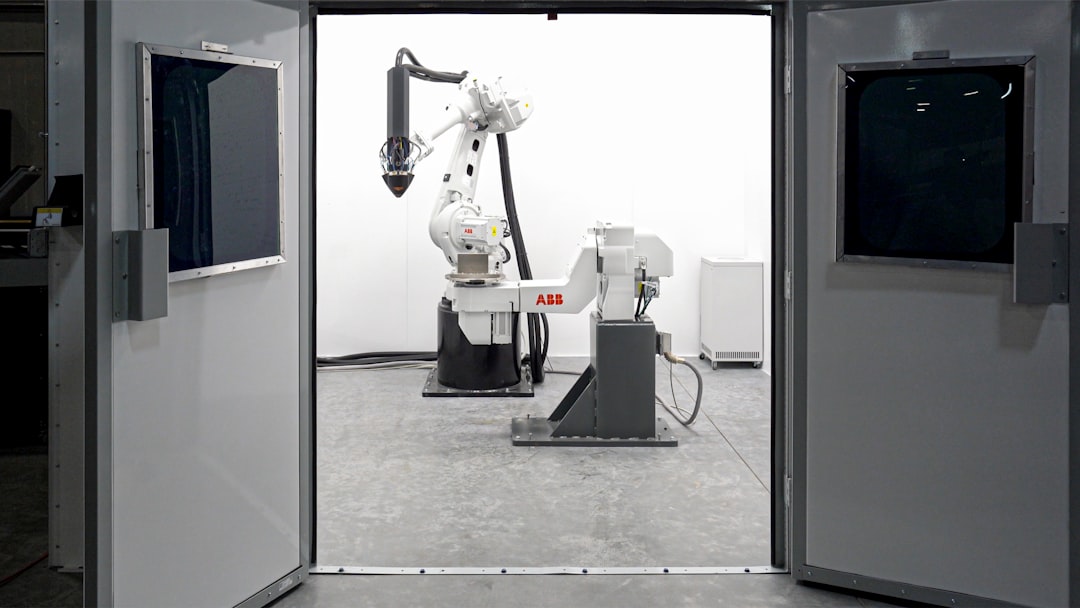As you step into the modern workplace, it’s hard to ignore the growing presence of robotics. Over the past few decades, advancements in technology have led to a significant rise in the use of robots across various industries. From manufacturing to healthcare, these machines are becoming integral to daily operations.
You may have noticed that tasks once performed by humans are increasingly being handled by automated systems, which can work tirelessly and with precision. This shift is not merely a trend; it represents a fundamental change in how work is conducted, driven by the need for efficiency and productivity. The rise of robotics is fueled by several factors, including the demand for higher output and the need to reduce operational costs.
As businesses strive to remain competitive in a global market, they are turning to automation as a solution. You might find it fascinating that robots can perform repetitive tasks with greater accuracy than humans, minimizing errors and maximizing productivity. This has led to a surge in investment in robotic technologies, as companies seek to harness their potential to streamline processes and enhance overall performance.
Key Takeaways
- Robotics in the workplace is on the rise, with automation becoming increasingly common across various industries.
- Automation has the potential to significantly impact jobs, leading to both displacement and the creation of new roles.
- The ethical dilemma of human replacement by robots raises questions about the value of human labor and the impact on society.
- Robotic labor offers advantages such as increased productivity and safety, but also comes with disadvantages like job displacement and potential loss of human touch.
- Robotics play a key role in increasing efficiency in the workplace, but there is also the potential for job displacement and the need to balance human and robotic labor.
The Impact of Automation on Jobs
While the rise of robotics brings undeniable benefits, it also raises concerns about its impact on employment. As you observe the landscape of work evolving, you may wonder how automation affects job availability and security. Many traditional roles are being transformed or eliminated altogether, leading to fears of widespread job displacement.
For instance, assembly line workers may find their positions at risk as robots take over repetitive tasks that were once their responsibility. This shift can create anxiety among workers who feel their skills may no longer be relevant in an increasingly automated world. However, it’s essential to recognize that automation does not solely lead to job loss; it can also create new opportunities.
As you delve deeper into this topic, you may discover that while some jobs are disappearing, others are emerging that require different skill sets. For example, the demand for robotics engineers, data analysts, and technicians is on the rise as companies seek individuals who can design, maintain, and improve automated systems. This evolution in job roles highlights the need for workers to adapt and acquire new skills to thrive in a changing job market.
The Ethical Dilemma of Human Replacement

The ethical implications of replacing human workers with robots present a complex dilemma that you cannot ignore. As automation becomes more prevalent, questions arise about the moral responsibility of companies and society as a whole. You might find yourself pondering whether it is justifiable to prioritize efficiency and profit over human employment.
The decision to implement robotic systems often comes down to a cost-benefit analysis, but this approach can overlook the human element involved in work. Moreover, the ethical considerations extend beyond mere job displacement. You may also reflect on the potential consequences for worker dignity and identity.
Many individuals derive a sense of purpose and fulfillment from their jobs, and replacing them with machines can lead to feelings of worthlessness and alienation. As society grapples with these ethical dilemmas, it becomes increasingly important to engage in discussions about the values we prioritize in our workplaces and how we can ensure that technology serves humanity rather than undermines it.
Advantages and Disadvantages of Robotic Labor
| Advantages of Robotic Labor | Disadvantages of Robotic Labor |
|---|---|
| Increased productivity | Job displacement |
| Consistent quality | High initial investment |
| Improved safety | Reduced employment opportunities |
| 24/7 operation | Technical failures |
When considering the role of robotics in the workplace, it’s crucial to weigh both the advantages and disadvantages of robotic labor. On one hand, you can appreciate the numerous benefits that automation brings. Robots can operate around the clock without fatigue, leading to increased productivity and efficiency.
They can also perform tasks that are dangerous or physically demanding for humans, reducing workplace injuries and enhancing safety. Additionally, robots can handle large volumes of data quickly and accurately, enabling businesses to make informed decisions based on real-time information. On the other hand, there are significant drawbacks to consider.
The initial investment required for robotic systems can be substantial, posing a barrier for smaller businesses. Furthermore, as you contemplate the long-term implications, you may recognize that over-reliance on automation can lead to skill degradation among workers. If employees become accustomed to relying on machines for tasks they once performed themselves, they may lose valuable skills over time.
This dependency could create challenges if technology fails or if there is a need for human intervention in complex situations.
The Role of Robotics in Increasing Efficiency
Efficiency is often touted as one of the primary advantages of integrating robotics into the workplace. As you observe various industries adopting these technologies, you may notice how robots streamline processes and enhance productivity levels. For instance, in manufacturing settings, robots can assemble products at a speed and accuracy that far surpasses human capabilities.
This increased efficiency not only boosts output but also allows companies to meet consumer demands more effectively. Moreover, robotics can optimize supply chain management by automating inventory tracking and order fulfillment processes. You might find it interesting that companies employing robotic systems can reduce lead times and minimize waste, ultimately leading to cost savings.
As businesses continue to embrace automation, they are likely to experience a transformation in their operational models, allowing them to focus on innovation and growth rather than merely keeping up with demand.
The Potential for Job Displacement

Despite the advantages that robotics offer, the potential for job displacement remains a pressing concern for many workers. As you consider this issue, you may realize that entire sectors could be affected by automation. For example, industries such as retail and transportation are already witnessing significant changes due to advancements in technology.
Self-checkout systems in grocery stores and autonomous delivery vehicles are just a few examples of how automation is reshaping traditional job roles. The fear of job loss can create a sense of uncertainty among workers, leading to resistance against automation initiatives. You might empathize with those who worry about their livelihoods being threatened by machines designed to perform their tasks more efficiently.
This anxiety underscores the importance of addressing the potential consequences of automation proactively and ensuring that workers have access to retraining programs and support as they navigate this evolving landscape.
The Importance of Human Creativity and Innovation
While robotics excels at performing repetitive tasks with precision, it is essential to recognize the irreplaceable value of human creativity and innovation. As you reflect on what makes us uniquely human, you may appreciate that our ability to think critically, solve complex problems, and generate new ideas cannot be replicated by machines. In many industries, creativity is a driving force behind progress and innovation, enabling businesses to differentiate themselves in competitive markets.
You might envision scenarios where robots handle mundane tasks while humans focus on strategic thinking and creative endeavors. This partnership has the potential to unlock new levels of productivity and innovation that neither could achieve alone.
As we move forward into an increasingly automated future, fostering an environment that values human creativity alongside robotic efficiency will be crucial for sustainable growth.
The Need for Regulation and Oversight in Robotics
As robotics continues to permeate various sectors, the need for regulation and oversight becomes increasingly apparent. You may find yourself considering how society can ensure that these technologies are implemented responsibly and ethically. Without proper guidelines in place, there is a risk that companies may prioritize profit over safety or worker welfare when deploying robotic systems.
Regulatory frameworks can help establish standards for safety, accountability, and transparency in robotic operations. You might envision a future where organizations are required to conduct impact assessments before implementing automation technologies, ensuring that potential consequences for workers and society are thoroughly evaluated. By fostering an environment of responsible innovation, we can harness the benefits of robotics while mitigating potential risks associated with their widespread adoption.
The Future of Human-Robot Collaboration
Looking ahead, the future of work will likely be characterized by increased collaboration between humans and robots.
Rather than viewing robots as competitors for jobs, envision them as partners that can enhance human capabilities and drive progress across various fields.
In this collaborative future, you might imagine workplaces where humans leverage robotic assistance to amplify their skills and creativity. For instance, in fields like healthcare, robots could assist doctors with diagnostics or data analysis while leaving critical decision-making in human hands. This synergy has the potential to revolutionize industries by combining the strengths of both humans and machines for optimal outcomes.
The Psychological and Societal Effects of Automation
The psychological impact of automation on individuals cannot be overlooked as you contemplate its broader societal implications. The fear of job loss can lead to increased stress and anxiety among workers who feel uncertain about their future prospects. You may also consider how societal attitudes toward work are evolving in response to automation; as traditional notions of employment shift, individuals may grapple with questions about identity and purpose.
Furthermore, automation has the potential to exacerbate existing inequalities within society. You might reflect on how access to retraining programs or opportunities for upskilling varies across different demographics, potentially leaving some groups at a disadvantage in an automated world. Addressing these disparities will be crucial for ensuring that all individuals have a fair chance to thrive in an evolving job market.
Finding a Balance Between Human and Robotic Labor
Ultimately, finding a balance between human labor and robotic assistance will be key to navigating the future of work successfully. As you consider this challenge, you may recognize that both elements have unique strengths that can complement one another when integrated thoughtfully. Striking this balance requires open dialogue among stakeholders—including businesses, workers, policymakers, and technologists—to ensure that automation serves humanity’s best interests.
You might envision a future where organizations prioritize employee well-being alongside technological advancement by investing in training programs that equip workers with skills relevant to an automated landscape. By fostering an environment where humans and robots coexist harmoniously, we can create workplaces that not only drive efficiency but also promote creativity, innovation, and fulfillment for all involved. In conclusion, as you navigate this rapidly changing landscape shaped by robotics and automation, it’s essential to remain engaged with these discussions surrounding ethics, employment impacts, creativity, regulation, collaboration—and ultimately finding harmony between human labor and robotic assistance for a brighter future ahead.
In the ongoing debate about whether robots should replace human workers, it’s essential to consider the broader implications on the economy and society. An insightful article on this topic can be found on How Wealth Grows, which delves into the potential economic impacts and the future of work in an increasingly automated world. For a deeper understanding, you can read more about these dynamics by visiting the article on How Wealth Grows. This resource provides a comprehensive analysis of how automation might reshape industries and the workforce, offering valuable perspectives on the balance between technological advancement and human employment.
FAQs
What are the advantages of using robots to replace human workers?
Robots can work continuously without breaks, reducing downtime and increasing productivity. They can also perform tasks that are dangerous or repetitive, reducing the risk of injury for human workers.
What are the disadvantages of using robots to replace human workers?
Replacing human workers with robots can lead to job loss and unemployment. It can also result in a loss of human touch and creativity in certain industries.
How do robots impact the economy when they replace human workers?
The use of robots can lead to increased efficiency and lower production costs, which can benefit the economy. However, it can also lead to income inequality and job displacement, which can have negative effects on the economy.
What industries are most likely to be impacted by the replacement of human workers with robots?
Industries such as manufacturing, agriculture, and transportation are most likely to be impacted by the replacement of human workers with robots due to the repetitive and dangerous nature of the tasks involved.
What are the ethical considerations of replacing human workers with robots?
Ethical considerations include the impact on human workers who may lose their jobs, as well as the potential for robots to make decisions that could have ethical implications, such as in the case of autonomous vehicles.
